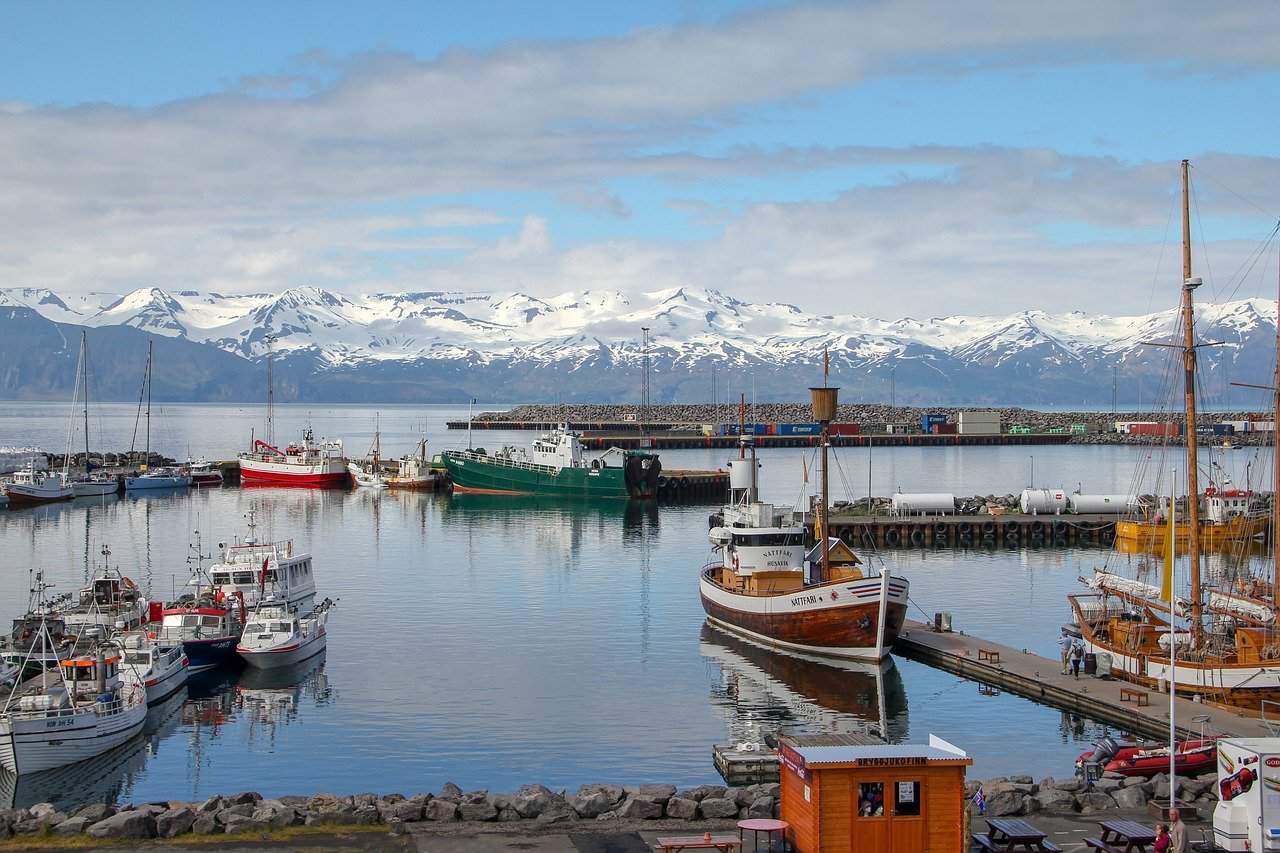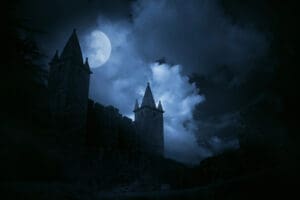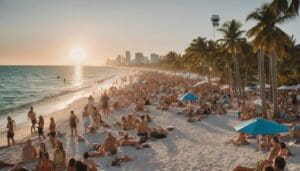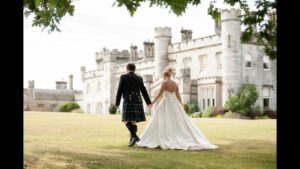5 Popular Iceland Attractions You Should Explore – Travel Video

Updated On: April 22, 2024 by Miranne Khaled
Iceland is a fascinating land of contrasts, from ancient folklore to stunning natural wonders. While it may evoke images of ice and snow, Iceland is far more than just a frigid landscape. It’s a place where glaciers meet volcanoes, waterfalls cascade down lava fields, and stories of elves and trolls mingle with the echoes of Viking history.
In ancient times, Iceland was covered in forests, but harsh conditions like volcanic eruptions and deforestation by Vikings have reduced these woodlands to a fraction of their former extent. Despite this, Iceland remains a land of captivating beauty, with various attractions that draw visitors from around the globe.
So, let’s delve into the most prominent and unmissable Iceland attractions of all time.
1. Eldhraun Lava Field
Imagine a land sculpted by the raw power of nature, where molten lava once surged across the Earth, leaving behind a mesmerizing expanse of rugged terrain. In southern Iceland, nestled amidst the stark beauty of the landscape, lies the Eldhraun Lava Field, a testament to the Earth’s fiery past.
Born from the explosive Laki eruption in the late 18th century, Eldhraun is the world’s most enormous lava flow, a vast expanse of hardened rock stretching over 565 square kilometres. Unsurprisingly, that’s one of the most prominent attractions in Iceland that draws people from all corners of the world.
While Eldhraun’s fragile moss cover warns of its delicate nature, the site remains a popular tourist destination. Visitors cautiously traverse the ancient lava flows, marvelling at the raw power of nature that shaped this extraordinary landscape.
A Tale of Fiery Destruction and Resilient Beauty
This formidable creation, formed from eight months of relentless lava spewing from the Grímsvötn volcano, is marked by a history as tragic as it is awe-inspiring. The eruption unleashed a torrent of destruction, releasing clouds of toxic gases that ravaged the land, decimating livestock and rendering fields barren.
The catastrophe triggered a devastating famine, claiming the lives of nearly a quarter of Iceland’s population. Despite the scars of its fiery past, Eldhraun has transformed into a captivating natural wonder. Over time, a verdant tapestry of moss has enveloped the rugged terrain, softening its harsh edges and adding a touch of resilience to the land.
A Cool Training Ground for Astronauts
In 1969, the Apollo 11 crew found an uncanny resemblance between Eldhraun’s lunar-like landscape and the moon’s surface. They chose this extraordinary site as their training ground, preparing for their historic moonwalk.
Eldhraun’s allure lies in the stark contrast between its destructive origins and present-day tranquillity. It serves as a poignant reminder of the Earth’s transformative power, where even the most devastating events can give rise to breathtaking beauty.
2. Mýrdalsjökull Glacier
In the heart of Iceland’s southern highlands, a colossal ice-capped behemoth holds sway over the landscape, its name a tongue twister that rolls off the lips like a rumbling avalanche – Mýrdalsjökull. As Iceland’s fourth-largest icecap, this awe-inspiring giant towers over the land, its tallest peak reaching 1,500 meters, piercing the heavens.
Mýrdalsjökull translates to “Mire Dale Glacier,” alluding to the marshy lowlands surrounding its base. But don’t let the seemingly serene surroundings fool you; beneath this icy expanse lies a fiery, slumbering beast – the notorious Katla volcano.
Katla: Iceland’s Most Active Volcanoes
Mýrdalsjökull, one of the hottest tourist attractions in Iceland, is the Katla volcano, which resides beneath the glacier’s ice. Its explosive nature is a stark contrast to the glacier’s tranquil exterior. With an eruption history dating back to the Pleistocene, Katla has unleashed its fury upon the land dozens of times, sending torrents of lava and ash spewing forth, wreaking havoc upon the surrounding countryside.
Mýrdalsjökull remains a popular destination for adventure seekers. Sólheimajökull is one of its glacial outlets, and it has become a mecca for ice-climbing and glacier-hiking enthusiasts. Visitors strap on crampons and embark on exhilarating expeditions across the glacier’s icy surface, exploring its crevasses and marvelling at its otherworldly beauty.
Standing atop Mýrdalsjökull, one can’t help but feel a sense of awe and humility in the face of nature’s immense power. With its serene beauty and volatile underbelly, this glacier is a stark reminder of the dynamic forces shaping Iceland’s ever-changing landscape.
Myrdalsjokull Ice Caves
Among the hidden gems of Myrdalsjokull Glaciers are the stunning ice caves, which some call “the secret ice caves of Myrdalsjokull Glaciers”. That’s because they are very hard to find and should only be entered with a guide who knows the place well. Glacial ice caves are not permanent; they come and go depending on the whirlpools of the water, which are responsible for forming the caves.
3. Seljalandsfoss Waterfall: A Journey Behind the Thundering Cascade
In waterfalls, the word “foss” reigns supreme in Iceland, signifying nature’s cascading wonders. Among these awe-inspiring spectacles, Seljalandsfoss stands out as a masterpiece, beckoning travellers with its breathtaking beauty. Towering at an impressive 65 meters, Seljalandsfoss is a must-see among all of Iceland’s attractions.
The true allure of Seljalandsfoss lies in its unique accessibility. Unlike most waterfalls that confine their splendour to a distant view, Seljalandsfoss invites you to venture behind its veil of cascading water. Embrace the refreshing mist as you embark on a path that leads you into the heart of the waterfall, where nature’s symphony of rushing water and echoing droplets surrounds you.
Timing your visit is critical to maximizing your Seljalandsfoss experience. On a sunny day, the waterfall transforms into a shimmering canvas for rainbows, painting the scene with vibrant hues. However, during the winter months, the path behind the waterfall remains closed, its icy grip posing a risk to unsuspecting adventurers.
4. Reynisfjara Black Sand Beach
Along Iceland’s dramatic southern coast, nestled amidst towering cliffs and crashing waves, lies a realm of stark beauty and ancient folklore – Reynisfjara Beach. Renowned for its mesmerizing black sand, sculpted by countless volcanic eruptions, Reynisfjara is a testament to nature’s enchanting power for transformation.
Reynisfjara is one of the most popular attractions in Iceland, and its allure extends beyond its visual splendour. The beach serves as a breeding ground for countless seabirds, including the charismatic Atlantic puffins, their colourful plumage adding a splash of vibrancy to the monochrome landscape.
As you wander along the shore, be mindful of the unpredictable power of the ocean. Rogue waves, known as sneaker waves, can suddenly surge ashore, posing a danger to unsuspecting visitors. Exercise caution and always respect the raw power of nature.
Reynisfjara Folklore
Three colossal sea stacks are emerging from the ocean’s depths that stand guard over the shoreline – the Reynisdrangar. These towering basalt columns have long captivated visitors with their otherworldly beauty. Local folklore adds an intriguing layer to the allure of Reynisdrangar.
According to one legend, these pillars were once mischievous trolls caught by the rising sun, forever frozen in stone as punishment for their trickery. Another ancient story tells of a woman kidnapped and killed by two trolls. The woman’s husband follows the trolls to Reynisdrangar for revenge; he then froze them to ensure they would never kill again.
While these tales add a touch of magic to the Reynisdrangar, it’s important to remember that safety should always be a priority when visiting this natural wonder. The ocean around the sea stacks is unpredictable, and rogue waves can suddenly surge ashore. Please exercise caution and always respect the raw power of nature. When in doubt, keep a safe distance from the shoreline and admire the Reynisdrangar from afar.
5. The Geothermal Wonders of Haukadalur Valley Geyser
In the heart of Iceland’s geothermal wonderland lies the Haukadalur Valley, renowned for its awe-inspiring geysers that spew forth steaming jets of water and gas, captivating visitors with their raw power and beauty.
A visit to the Haukadalur Valley Geysers is an unforgettable experience, immersing visitors in the heart of Iceland’s geothermal tapestry. As you stand before these erupting giants, let the rhythmic thunder of the geysers fill your senses and marvel at the raw power of nature that shapes this extraordinary landscape.
Beyond the captivating geysers, the Haukadalur Valley is home to a stunning array of geothermal wonders, including bubbling mud pots, steaming fumaroles, and vibrant mineral springs that add colour to the landscape. These geological marvels vividly portray Iceland’s powerful geothermal forces, reminding us of the immense energy beneath the Earth’s surface.
Strokkur: An Alluring Iceland Attraction
Among the geothermal marvels of the Haukadalur Valley, Strokkur stands out as a veritable spectacle, erupting with clockwork regularity every 10 to 15 minutes, painting the sky with plumes of water that reach astonishing heights.
While Strokkur takes centre stage with its frequent eruptions, its neighbour, Geysir, holds a place of honour as the namesake of all geysers worldwide. While its eruptions have become less frequent in recent years, Geysir’s legacy endures, and witnessing its majestic plume remains a cherished experience.
For those seeking adventure, nothing can ever beat the fascination of Iceland attractions. This country is a slice of paradise on Earth. So, explore vast lava fields, hike atop towering glaciers, and descend into steaming volcanic craters. So, get yourself ready to embark on the journey of a lifetime.






